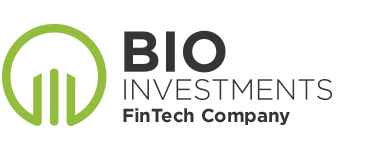Blockchain Revolution for the Art Industry
Soon after wrapping up BlockShow Asia 2017[1] main conference, Cointelegraph has been updating you about the companies that made some significant efforts at the event. This time let’s discover a company called INK and understand its COO Daniel Zhai’s perspective.
Daniel Zhai told us about the next revolution, a revolution of Blockchain[2] environment in the creative scene. So if you’re an artist and you’re sick and tired of other people copying your work or some middleman taking away too much money, INK is the platform for you to sign up.
Cointelegraph: What is INK? Could we call it a Blockchain platform where creative individuals don’t get screwed over by the system?
Daniel Zhai: Yeah, that’s right. Couldn’t have made a better introduction myself. INK is a set of Blockchain solutions for the creative industry, mostly for the artists. If you want to do an art project, you got to claim ownership of your project. If you are a writer – you write something in your article on your blog and somebody say “Ok. This is a good idea! There’s a piece of good, you know, thoughts and pitiful words.” Then, they put it in their book. So there is no way for you to claim that is what you’ve written.
CT: And then there is legal aspect of it, which most people don’t understand, right?
DZ: With the Internet and traditional industry, the action of encouragement is everywhere. If you wrote a song, I wrote a song and it sounds very similar who’s there to say that I wrote a song or you wrote the song. No! There’s no perfect solution for that. But, if you register your work on a Blockchain that guarantees an ownership. This is yours and nobody can take it from you.
That’s the first step that we’ve been doing for over one year – to really expand the vision. Our second and third step is to tokenize your art projects. If you want to shoot a film, and you’re young artists, you’re doing something very ambitious. You don’t know anybody in the industry, you don’t have the resources to, you know, distribute your work. So you’re basically screwed. That is why young artists really need a way to fund their projects.
In our second and third step, we’ll have a crypto crowdfunding platform – if you want to do a film, an album or anything for that matter, you can INK cash it and support your own project, using our resources. Also, once your art project tokens get recognized, you can list them on our INK exchange – an exchange designed for artists.
CT: How is this gonna be different from existing platforms, like a Kickstarter project or even Patron? There’s a lot of platforms out there that support artists and get them paid. How is INK going to be a distraction?
DZ: That’s the best question I’ve had so far, thank you. So when you have an idea and others don’t, say, you want to make a fancy water bottle and I also want to make a fancy bottle of water as well. Your design of water bottle, anyone can copy and put it on Kickstarter. How would you claim that it is yours? No, you can’t. But on Blockchain you can.
Let’s admit, Kickstarter does not have Blockchain. We have it. Also, on Kickstarter, there is a risk of fiat, and they have developed this huge amount of projects where they pick the best projects, and more often than not, good projects are abandoned.
To be honest, in our content we are very much like a Kickstarter but we give people crypto. And the market is very liquid so when you raise your project – it’s a very easy thing to do, to get your project funded, even though you don’t have a nice presentation on the Kickstarter, a nice website, a good presentation of your ideas. But if you are a rough diamond – we are really the guys who helped you to shine and, you know, get your radio discovered.
CT: Also there’s a psychology behind the market. These days the sentiment is that if it’s crypto, then it’s far more likely to be spent. Anyway, this is gonna be an area where you mentioned that they don’t have to be, they can be diamond in the rough and they can get a spot but that was also how a lot of this young early platforms started, right? People just come in and provide content? But as this platform grows at the 2.0, 3.0 and then becomes a race between one developer – second developer – this gonna be the same with INK as well?
DZ: Right now we’ve seen some competitors but they are not doing it right. They all made something that very elementary and fundamental to the whole big picture. We’re working with some of the best lawyers across the world to design our own token economics behind everything and there is solid legal ground and on top of that, we have some of the best developers. We have a bunch of PhDs from my university UCL to guarantee from the technology side. So I think we’re presenting the best case that, you know, possible.
CT: This the other thing that I would like to get your thoughts on: what is your sentiment about the creative market these days, where people are constantly working for free, artists could be exploited, right? Due to this exposure, they maybe don’t get paid enough. And then, small guys pitch something to the big guys?
DZ: That’s the old industry, there is a clear hierarchy. So it’s a pyramid. If you want to climb to the top, you got to know someone, got have messy resources, make people behind you, to support you. So it’s not really good money for the young artists. When they’re young, they have the youth and the most energy to create; they are very innovative when they’re young, less active as they get old.
For instance, a young singer can only claim about ten percent from what she makes. If your tail is waved and you have Michael Jackson you can clear out of the 20 percent, but the middleman and the big guys who are sitting on top of the hierarchy of pyramid make the most money off the value that the artist creates. These are some pain points in this industry and we’re here to change that.
Whether the artist is existing, established or emerging, this platform is for all. Money is being made and someone is taking a huge chunk of it. And especially for young artists, you know, that’s where you get a push from INK.




